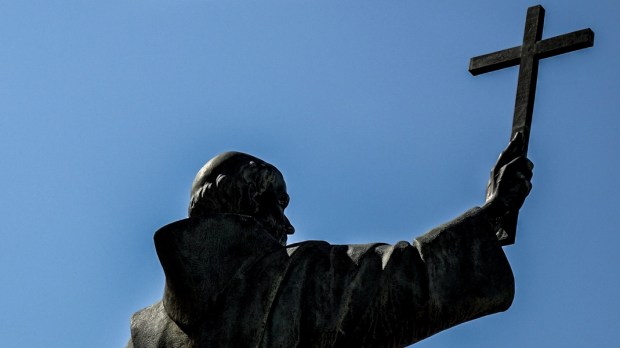When Jesus prayed that his followers would all be one, he knew well that the greatest enemies of Christian unity would be Christians themselves. We condemn each other and betray our own principles, pushing non-Christians further from the arms of Christ in the process. Blessed Agathangelus of Vendôme knew this well; his years of work for unity among Christians were thwarted by Protestants and Catholics alike, eventually leaving him a martyr.
Born Francis Noury in 1598, the Frenchman entered the Capuchin order at the age of 20, taking the name Agathangelus. After his ordination he set off on a career devoted to preaching in France, particularly focused on strengthening the Catholic faith in the face of a growing Protestant population. Effective as he was, Providence had other plans for the young Franciscan and after 3 years in France he found himself on a ship bound for Aleppo, having taken the place of another friar suddenly too sick to go on mission.
Fr. Agathangelus soon discovered that his presence in the Middle East was no coincidence; God had called him there to work for unity within the Catholic Church. At the time, Syria was home to many Eastern Rite Churches, both Catholic and Orthodox. Agathangelus set to work learning Arabic, and began to make contacts with leaders in the various churches.
Yet though he evangelized Muslims and even convinced an Orthodox bishop to come into union with Rome, Agathangelus faced great opposition from the Vicar General of the Maronite Catholics, a Church faithful to the pope. While many Maronites loved his preaching, others chased him out of town; his reception was so varied that his superiors decided to send him from Syria to Egypt. Though he stopped in Lebanon and was well-received by the Patriarch of the Maronite Church, who protested greatly at how he had been treated in Aleppo, Fr. Agathangelus continued on his way to Cairo.
When he arrived, Agathangelus had his work cut out for him: the Coptic Orthodox Church has been separated from Rome since the 5th century. Unlike the Eastern Orthodox, the division isn’t over authority but over the natures of Christ, a division so great that the two Churches only started recognizing each other’s baptisms as valid in 2017. But this missionary of Church unity knew that his work would be more effective if he started by emphasizing what Catholics and Oriental Orthodox share, so he moved in to a Coptic monastery and began to pray with the monks (having written to Rome for permission to do so). Eventually, he met the Patriarch of the Coptic Church, Pope Matthew III, and began to speak with him about the unity of the two Churches.
By the power of the Holy Spirit, Agathangelus had almost unimaginable success. Within a few years, Pope Matthew III indicated a desire to come into union with Rome. He invited Capuchin friars to preach in Orthodox Churches and encouraged the faithful to listen to them. But as powerful as Agathangelus’ preaching was, the dissolute lifestyles of the Catholics living in Cairo were even more so. The Copts couldn’t reconcile the evil they saw practiced by Catholics with the truth they heard preached, and though Agathangelus wrote to Rome for permission to excommunicate many whose example undermined the teaching of the Church, the damage was done. There would be no reunification.
Fr. Agathangelus’ next move wasn’t made from discouragement but from hope: in neighboring Ethiopia, the Jesuits had been exiled, the Oriental Orthodox declaring war on all Catholics. Surely this, if anywhere, was a place in need of his work of conciliation. So he and Blessed Cassian of Nantes set off, eager to bring peace to these warring Churches. Carrying a letter from the Patriarch of Alexandria, they thought they would be respected, but Peter Heyerling, a German Lutheran, had gone before them to poison the King even further against Catholicism.
Arrested soon after they reached Ethiopia in 1638, Fr. Agathangelus and Fr. Cassian were made to choose between the Catholic and Orthodox faiths on penalty of death. “We are too little attached to life,” an unimpressed Fr. Cassian responded, “that the fear of death should make such a great impression upon us.” The two priests were dragged to the place of execution with such haste that the executioners forgot ropes to hang them with. Unafraid, the Capuchins offered the cords tied at their waist as part of their Franciscan habit. With that, the great missionaries of Christian unity were hanged with their habits, martyrs to the hope “that all may be one.”
Neither a relativist nor a triumphalist, Fr. Agathangelus gave his life for the reunification of Christ’s Church while respecting the Holy Spirit’s work among separated Christians. On August 7, the feast of Blessed Agathangelus, let’s ask his intercession for unity among Christians, that all would act in humility and genuine love of truth. Blessed Agathangelus of Vendôme, pray for us!

